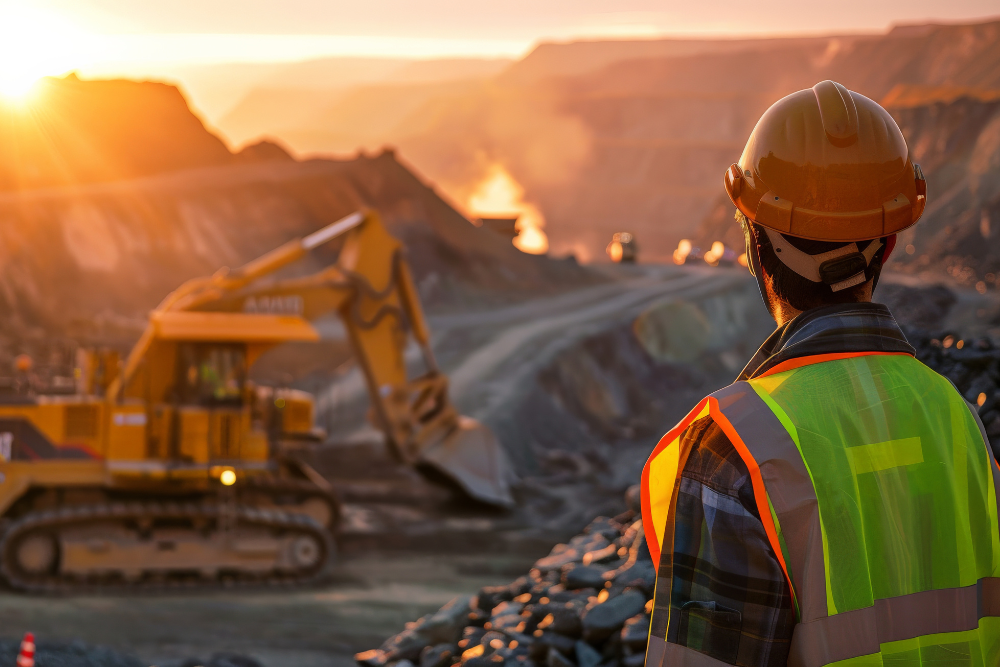The Role of Critical Minerals in the Global Energy Transition
The transition away from using coal together with oil and gas fuels as sources of energy continues across the world. Energy consumers nowadays migrate between different power sources, including wind power, solar power and water to obtain energy. Such a transition plays a crucial role in lowering dangerous emissions into the environment. The daily requirement of fuel energy has resulted in severe changes to environmental conditions.
Changing to new energy sources requires certain beneficial materials to complete this transition. The list of essential materials goes by the name critical minerals. The implementation of electric car batteries, solar panels and wind turbines depends on essential minerals. Lithium, together with cobalt nickel copper and rare earth elements, function mostly as key materials that support energy transition efforts.

Energy Transition
Energy transition means moving away from using fuels like coal, oil and gas. Replacing these with clean energy sources like solar, wind and water is more beneficial.
Every person recognizes that burning fossil fuels produces both dangerous carbon dioxide and additional polluting emissions. The atmosphere becomes trapped with heat from solar energy by these gases. The atmosphere heats up, because of this global warming occurs. The production using clean energy sources results in minimal pollutant emissions throughout the environment. Using clean energy as an alternative to fossil fuels remains a better option at all times.
Energy Transition includes:
- Using Clean Energy: changing our energy sources from coal, oil, and gas to renewable energy sources such as sun and wind. This is important for our environment.
- Using Electricity: using electricity to power cars, homes, and industries in place of fuels like petrol or gas.
- Saving Energy: creating better technology and infrastructure to use energy more efficiently and waste less.
- Producing Energy Locally: it is always recommended to encourage small energy systems locally. This includes rooftop solar panels or local wind turbines that can power our homes.
The Importance of Critical Minerals Shows in Their Usage
We will discuss critical minerals in the following discussion. The essential materials required for energy transition constitute the critical minerals. Clean energy technologies require these minerals for producing diverse power system elements that include solar panels batteries and wind turbines and power grids. The process of moving to renewable energy becomes substantially more difficult without critical minerals.
The following list shows essential critical minerals alongside their applications in the market:
Lithium:
Lithium stands as the primary mineral that powers electric car batteries as well as energy storage systems. During periods of low sunlight and wind speed these batteries function as storage units enabling use of energy captured from the sun or wind.
Cobalt:
Among critical battery materials cobalt features as an important ingredient. Batteries function optimally during longer durations due to this accessory.
Nickel:
Nickel batteries are most commonly used for power purposes. These help electric cars go farther on a single charge.
Rare Earth Metals:
Neodymium and dysprosium which belong to the rare earth alkali metals serve as components in wind turbine operations and electric motor systems. These materials help increase the efficiency.
Copper:
The essential component for electric current conduction is copper. Electricity transport from source to destination is achieved through the use of copper in power grids solar panels and wind turbines.
Energy Transition: Why Critical Minerals Are Not Used Widely?
While critical minerals are important, but they are not widely used because of their availability. Here are some challenges that we are facing while getting critical minerals:
- Limited Sources: critical minerals are not widely available. These minerals are limited to a few countries. For example: China has control over the production of rare earth metals in the world. If something happens to the production houses, the supply of these minerals will be limited to the rest of the world.
- Environmental Harm: mining these minerals can cause a lot of damage to the environment. It can destroy habitats, pollute water sources, and create waste. If mining is not done properly, it can cause some negative effects on the environment.
- Hard to Recycle: current technologies make it hard to extract minerals from leftover batteries or electronic devices. The mining process demands careful execution because these minerals present difficulties to handle.
How These Problems Can Be Solved: Strategies for Sustainable Energy Transition
To every problem, there is always a solution. So, we can also solve these challenges by:
- Find More Sources: instead of depending on a few countries, we can explore other places to mine these minerals.
- Mine Responsibly: mining companies should follow all the rules and regulations to protect the environment and workers. They can do so by reducing pollutants and conserving water. Governments should create strict rules to make sure mining is done properly.
- Recycle Better: we need to develop new technologies to recycle minerals more efficiently from old batteries and electronics. This will reduce the need for new mining.
- Track Minerals: blockchains function as emerging technologies to monitor mineral sources through processes ensuring proper and legal extraction.
The implementation of every strategy enables us to utilize critical minerals for establishing peaceful areas without pollution.
Conclusion
The generation of clean energy requires these minerals although their extraction poses difficulties. We need to work together. Our government, companies and people should stand together to make sure all the critical minerals are mined responsibly and used wisely. In this way, we can have a cleaner environment. The drastic change in the environment can also be minimized.
